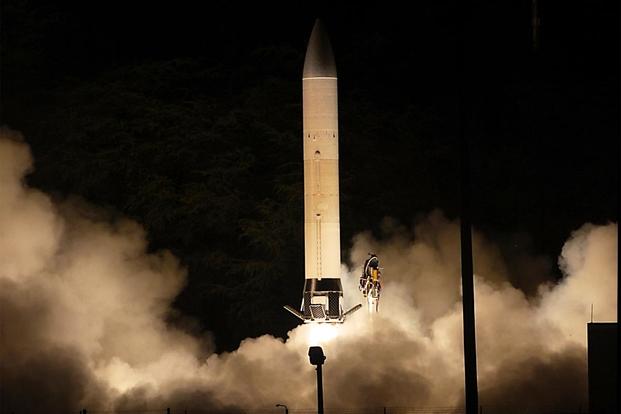The secretary of the Army wants to accelerate research into hypersonic and other advanced weapons as part of the service's push to modernize its offensive and defensive fires.
Hypersonic weapons, capable of flying at five times the speed of sound or faster, are the key to the service's top modernization priority -- long-range precision fires, Army Secretary Mark Esper told reporters at a Defense Writers Group breakfast in Washington, D.C. Wednesday.
"Long-range precision fires at the strategic level is the capability that we need to ensure we have overmatch in future conflicts, and I think that the way to get to it is through hypersonics."
Esper said he has stressed to the cross-functional team responsible for developing a new generation of long-range precision fires that the Army must move faster to develop hypersonic technology.
"I am pushing them to go as fast as they can, move to the left," he said, adding that the other services are also working on the technology.
"The services have been working together. We signed a joint agreement, if you will, in terms on how to proceed. The secretary of the Navy and the secretary of the Air Force and I meet constantly on this and other issues where we can work together. We all recognize that that is a key capability for all of us," he said.
The Army hopes to develop and field hypersonic weapons by 2028 at the latest, Esper said.
"This is one where, clearly, technology is an issue," he said. "It's not like there is one out there right now that I am aware of. ... This is one that is going to take some technology development. We are pushing hard because we've got to get there first."
The Army is also trying to accelerate efforts to develop directed-energy weapons for use in air and missile defense, another of the service's key modernization priorities.
"I think what's most exciting, and where the Army is making a good deal of progress, is on directed energy, and I think that is the future for the most part because of the volume and speed of shots that it gives you," Esper said, adding that the service is "putting a lot of our investments" toward powerful lasers designed to be mounted on vehicles.
In July, the Army awarded Raytheon a contract worth up to $10 million to develop a 100 Kilowatt-class laser weapon system preliminary designed to be mounted on the Family of Medium Tactical Vehicles, or FMTV.
"We have some things now, and I want to get them out in testing as soon as possible. Within a few years, I want to get something out there," Esper said. "Initial fielding is something else, but in terms of prototyping, seeing what it can do, I want to get it out sooner rather than later."
Lasers are a challenge because they can travel a great distance, depending on their power, "so you have safety concerns you have to work through," he said. "But like everything else, I am pushing folks to move left. Let's get it out to the field. Let's let soldiers experiment with it and see how they can best use it. ... They will help shape how we think about the importance of lasers in terms of actually firing them, but also how do we integrate them as part of our formation against everything from small drones to cruise missiles to fast movers."
The Army announced its ambitious plan to modernize its fleet of combat systems last October. In addition to long-range precision fires and air and missile defense, the service has also stood up special cross-functional teams to focus on its next-generation combat vehicle, future vertical lift, a mobile network, and soldier lethality.
-- Matthew Cox can be reached at matthew.cox@military.com.









